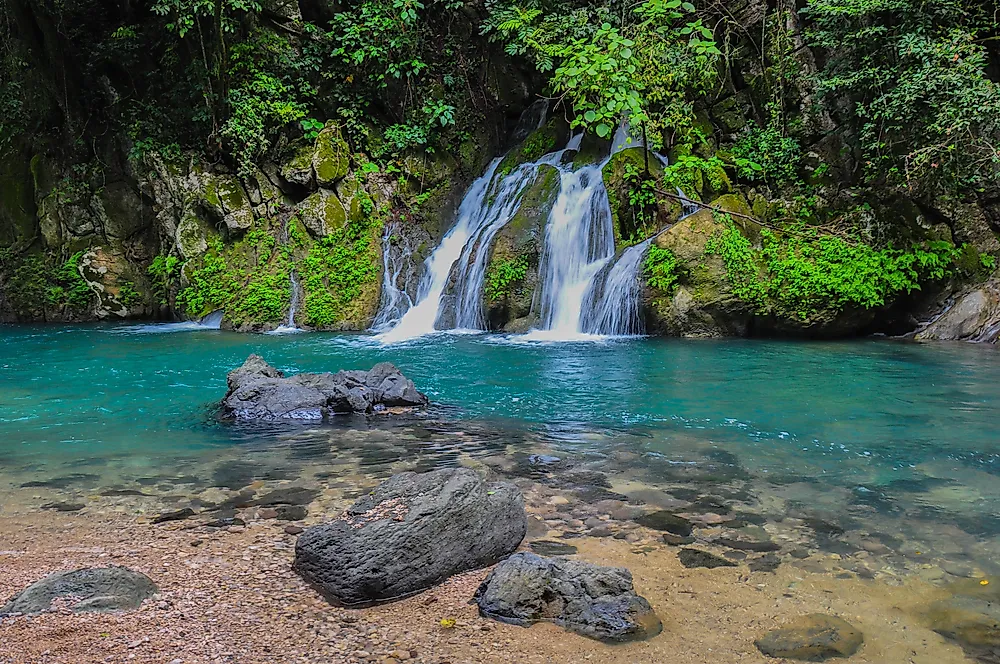Cañon de la Angostura, Mexico

Although it looks quite remote on the map, Cañon de la Angostura is within walking distance of a small mining town called Mina Grande, and a short 11-mile (18-kilometer) drive from the larger town of Pinal de Amoles, located in North-Central Mexico in the state of Querétaro. Spanning 164 ft (50 m) along the Escanela River, the local terrain is quite rough, being filled with steep canyons, mountains, and rivers. The climate in the municipality can range depending on altitude, but the average temperature is fairly comfortable, sitting between 54 to 65 ˚F (12 to 18˚C), with alternatively wet and dry seasons.
4. Tourism
The majority of the tourism Cañon de la Angostura receives are from locals from other parts of Mexico. Most of the towns nearby are small mining towns, so there may be some communication issues for the average tourist, and it may be best to brush up on some basic Spanish, or at least buy a phrase book before going. Despite this, it is not difficult to reach Cañon de la Angostura. After arriving at Mexico City and renting a car, it is only about a four to five hour drive to get to Pinal de Amoles by taking Highway 57 and merging onto Highway 120. There has been a major push for ecotourism throughout the area.
3. Uniqueness
For those interested in taking their time to explore the natural beauty of Mexico, Cañon de la Angostura is a fantastic place to visit. With cottages, campsites for as little as $30 USD a night, and restaurants around the Escanela River, there is no need to rush through the trip. Most of the canyon is made up of sedimentary rocks, especially limestone, which have been carved through by the river. Walking along the Escanela, visitors can also explore the small, hidden caves along the riverside, and see the Puente de Dios (Bridge of God), which is a natural rock bride made up of large stalactites, all year-round. Meanwhile, Peña de la Gloria, a famous seasonal waterfall, is only available to be seen during the rainy season.
2. Habitat
The area around Cañon de la Angostura is one full of wildlife. Along with hiking and swimming, visitors can also take up birdwatching as well, as there are a great number of avian species in the area. The fantastic flyers include macaws, woodpeckers, finches, and parakeets. Larger mammals in the area include white-tail deer, cougars, ocelots, bobcats, armadillos, foxes, coyotes, and other forest animals, such as raccoons and rabbits. There are also a number of reptiles to look out for there as well, with rattlesnakes, and coral snakes all posing threats. The forests around Cañon de la Angostura, and those running along the Escanela River, are made up of deciduous and coniferous trees alike, with pines, oaks, and white cedars listing among the largest and most prominent.
1. Threats
A normal amount of caution should be taken when visiting Cañon de la Angostura. During the wet season, the river and the rain may cause paths and rocks to become especially slippery, and, as with most places, it would be best to avoid direct contact with the wildlife there. One of the issues that the municipalities around Cañon de la Angostura are facing is illegal logging by individuals and small groups, with 30% of them being repeat offenders who continue to profit by selling the timber. Although there are environmental laws in place, the municipalities’ law forces are having trouble reinforcing them, and there has been talk of instating additional environmental police forces.











